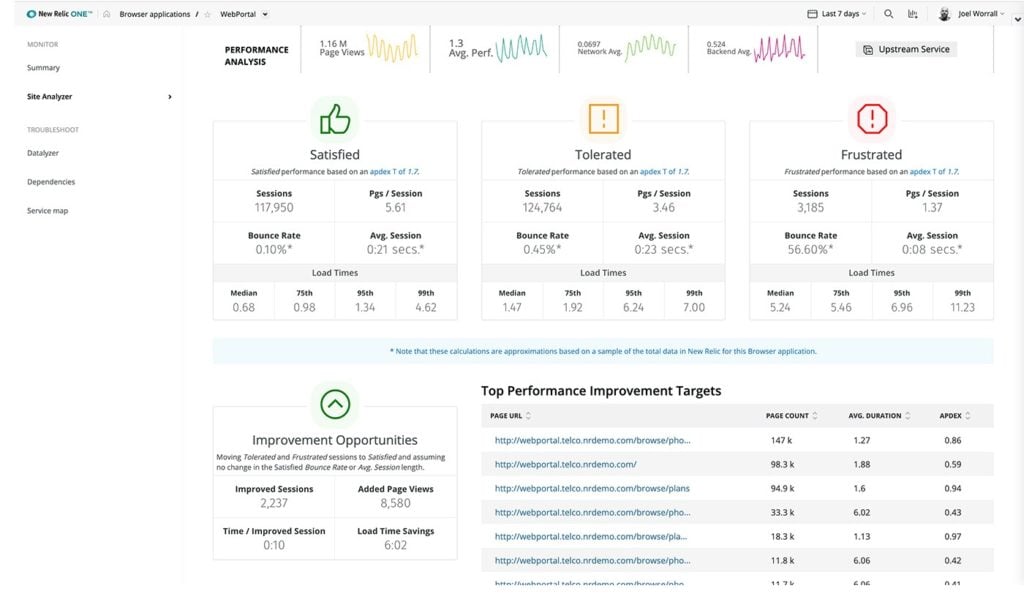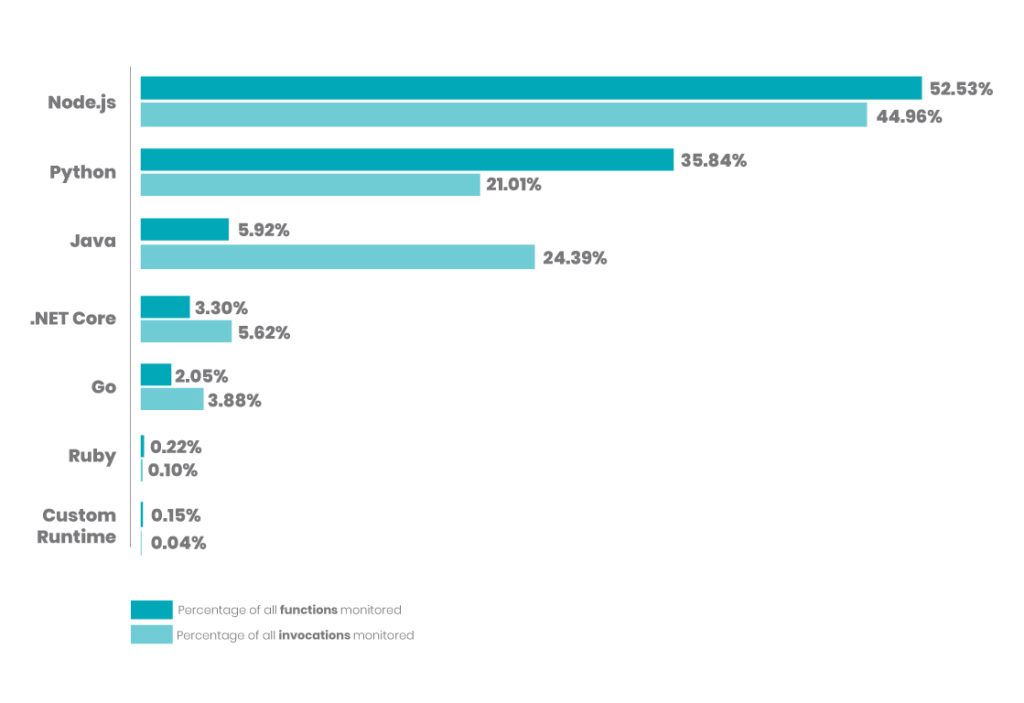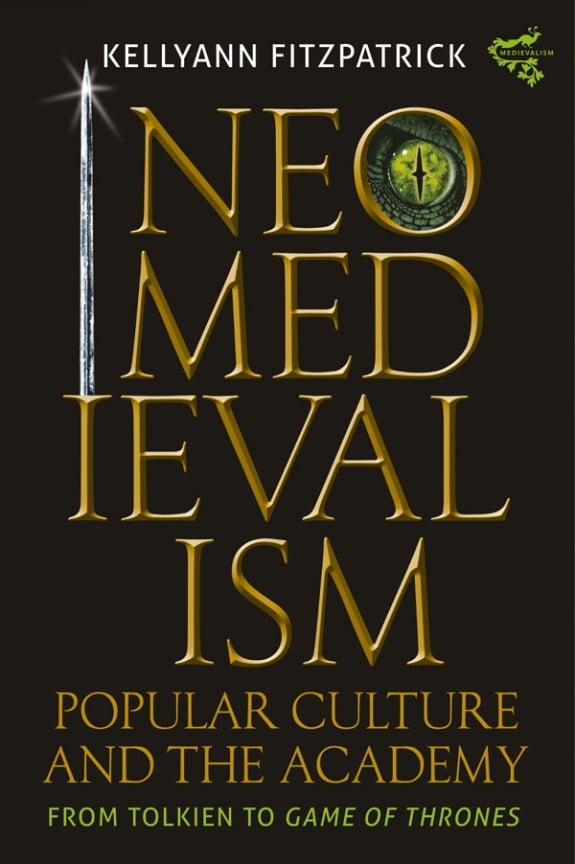As my colleague James notes in his piece on Reframing and Retooling for Observability, New Relic made a clear shift into the observability space with its launch of New Relic One:
In September last year New Relic put down a marker that it plans to compete in the market for Observability tools, announcing the New Relic One platform, with an aggressive throw down against newer market entrants.
In the weeks before a pandemic made such things impossible, James had the opportunity to sit down at the Smoking Goat–his favourite (UK spelling intentional) restaurant–and muse about observability more generally in this Opinionated Infrastructure video.
Regarding New Relic One in particular, my colleague Rachel and I had a chance to speak with various folks at New Relic and dig a bit deeper into the platform per se (and its characterization as an “observability platform”); we have also been keeping tabs on New Relic’s activity in the serverless observability space.
New Relic One as Observability Platform
Rachel and I formatted our conversations about New Relic One as What Is/How to videos. We recommend watching them in the following order:
What is an observability platform? How to extend and customize New Relic One
Mark Weitzel (General Manager, New Relic One) and I discuss the concept of an observability platform; included in the definition is the idea that it must be “programmable.” Mark then briefly demonstrates the resources available for developers to customize and extend New Relic One.
What is the New Relic One platform?
Rachel and Joel Worrall (Director of Open Source and Developer Advocacy at New Relic) dive deeper into the New Relic One platform and demonstrate the resources that developers can leverage to customize and extend the platform. The demo features existing open source applications available to devs (specifically the “browser analyzer” app pictured below) as well as the process of building a custom app.

Screenshot of the Browser Analyzer, one of the open source applications available to devs for customizing New Relic One
How to Deploy Applications on New Relic One
Rachel and Joel explore more of the resources and open source applications that developers can leverage to customize and extend the New Relic One platform. The demo features existing open source applications available to devs (including the top, cloud optimize, customer journey, and neon apps).
Additional New Relic One Resources
- See all dev resources at developer.newrelic.com
- Download the New Relic One CLI
- Check out available New Relic open-source apps at github.com/newrelic
More on Serverless Observability
As I note in my post on What is Serverless Observability?, New Relic has been both active and vocal around monitoring and observability for serverless applications, exemplified by those built with Amazon Web Services (AWS) Lambda. Since the earlier post (and related video) came out, we’ve seen some additional serverless observability movement from New Relic.
In February 2020 New Relic published For the Love of Serverless: 2020 AWS Lambda Benchmark Report for Developers, DevOps, and Decision Makers, which they summarize as follows:
New Relic One processes trillions of serverless events across the globe. For this report, we’ve aggregated and analyzed the same sample set over time to call out key trends that help serverless users make knowledge-based decisions about their architecture and performance goals to ultimately build better software.
The report captures data from a very precise intersection of AWS Lambda and New Relic users, and is worth a look especially for adoption findings around timelines and runtimes. Some of the findings are not surprising, such as Node.js and Python topping the “Lambda Adoption by Runtime” ranking by percentage of all functions monitored (and this matched similar language usage statistics for AWS Lambda in The State of Serverless report that Datadog published a few weeks prior to the New Relic report).
Lambda Adoption by Runtime, July-December 2019 (source: New Relic, 2020 For the Love of Serverless report)

Lambda Adoption by Runtime, July-December 2019 (source: New Relic, 2020 For the Love of Serverless report)
However, I found it interesting to see Java (third in percentage of all functions monitored in both the New Relic and Datadog reports) jump ahead of Python in percentage of invocations monitored; the New Relic report suggests that this may be partially attributed to the “lift and shift” of extant java applications (the Datadog report does not capture invocation metrics).
More recently (as in yesterday morning), New Relic was represented in the innovative Desert Island DevOps conference, which, as Rachel has written about, took place in a Nintendo Switch game, was streamed live on Twitch, and had 11k+ viewers tune in throughout the day. New Relic Developer Advocate Nočnica Fee gave the second talk of the day on “No Dev is an Island: How to Do Serverless Together.”
🏝️No Dev is an Island: How to Do #Serverless Together. Don't miss @NocnicaFee's talk at the first Animal Crossing-based DevOps conference on April 30 https://t.co/I44Q3g83tT #DIDevOps pic.twitter.com/DV3LzhQgof
— New Relic (@newrelic) April 22, 2020
New Relic was also a sponsor (and got in on the virtual conference swag trend with an in-game branded hoodie). And while Fee may have posed the question “Did you know that New Relic did serverless monitoring?” at the start of her talk, by the end of her talk the thousands of viewers tuning in would undoubtedly have answered the question with “yes”.
Disclosure: New Relic and AWS are RedMonk clients (Datadog currently is not). The videos discussed in this post were sponsored by New Relic (but this post was not).

No Comments